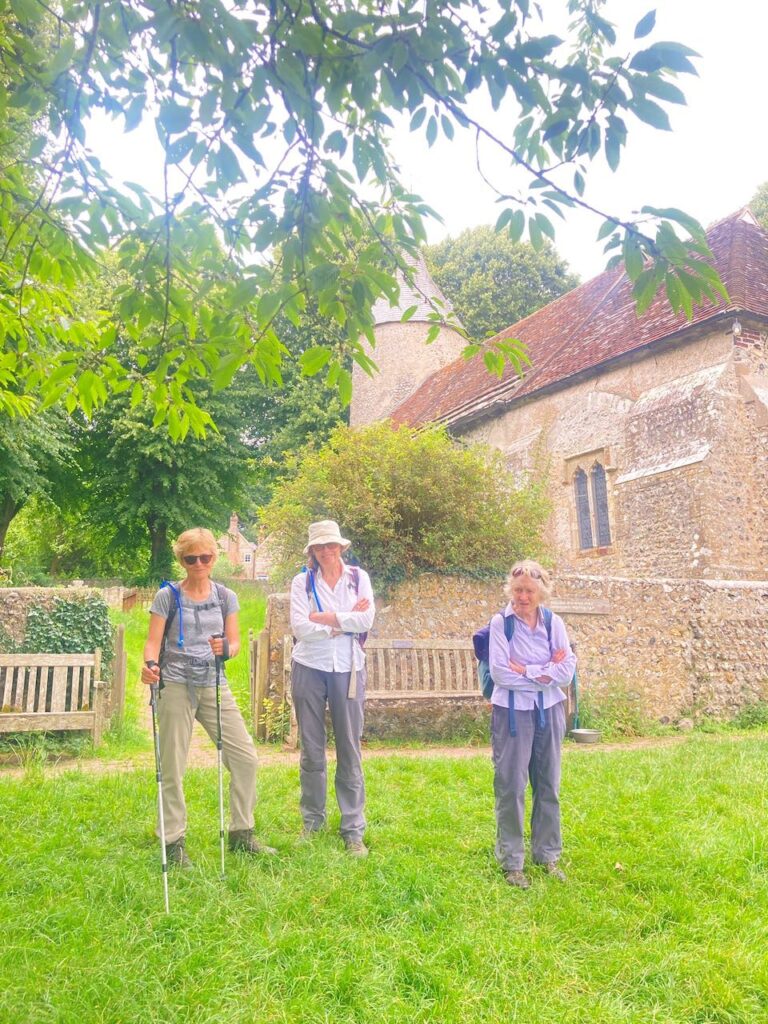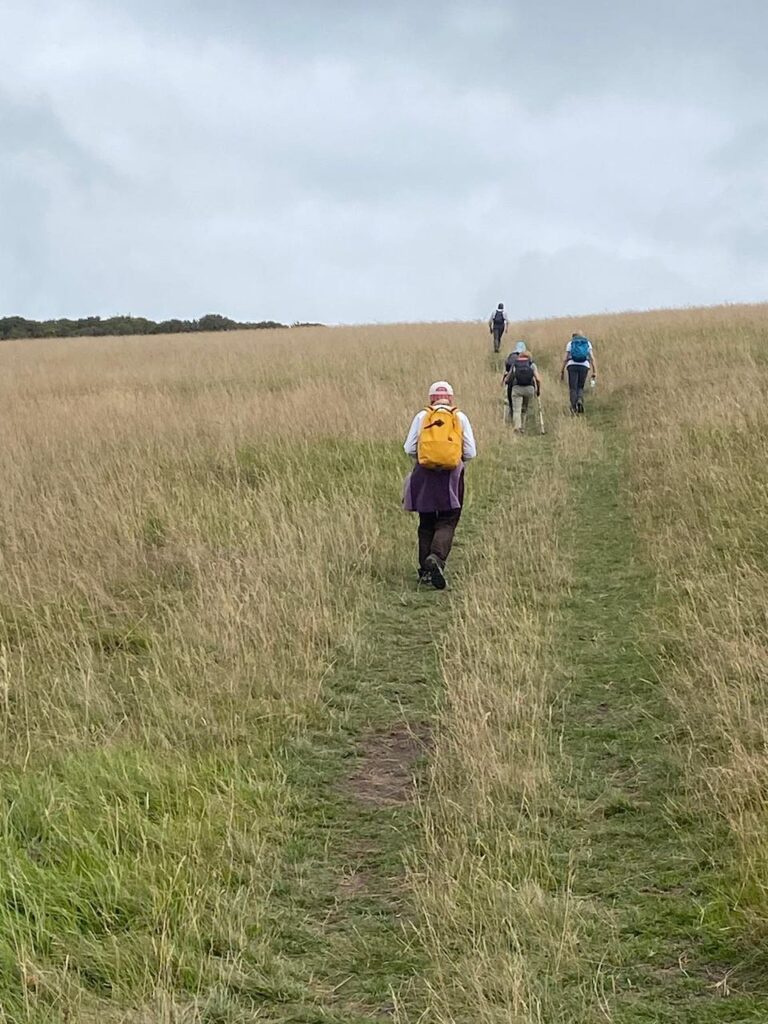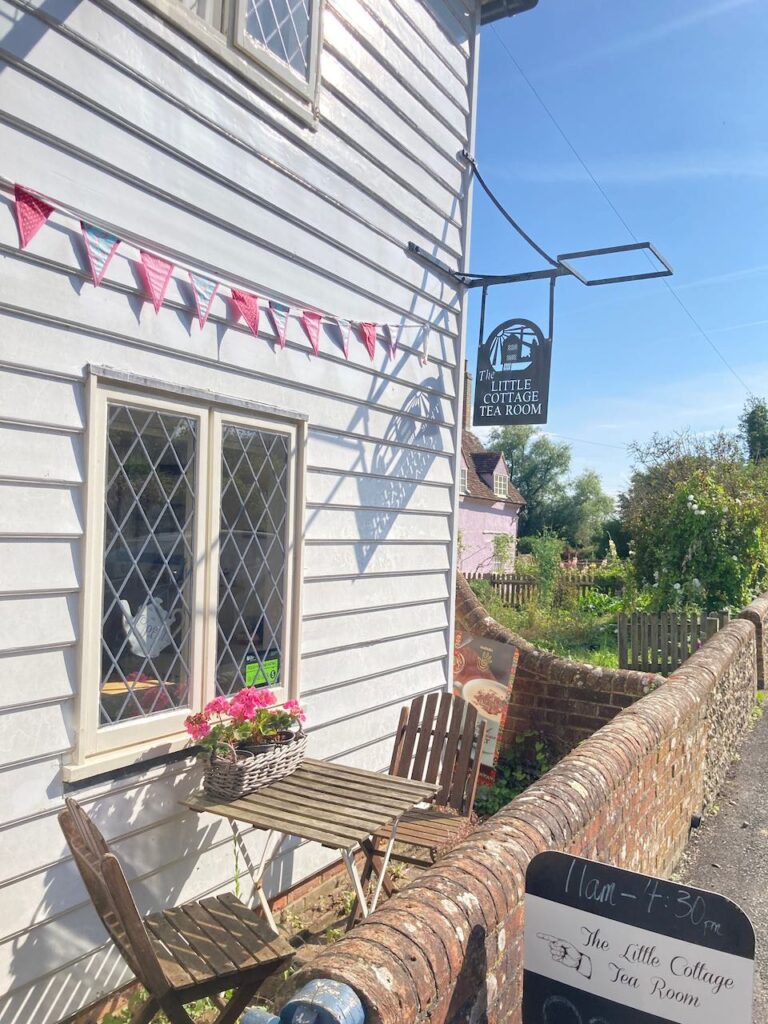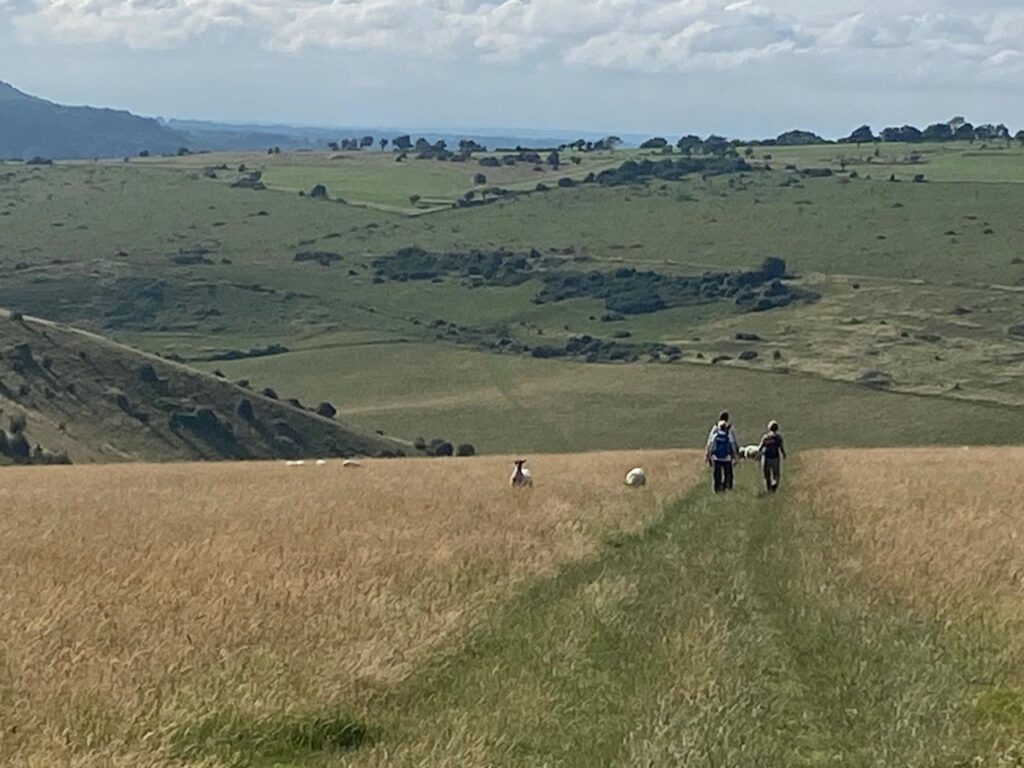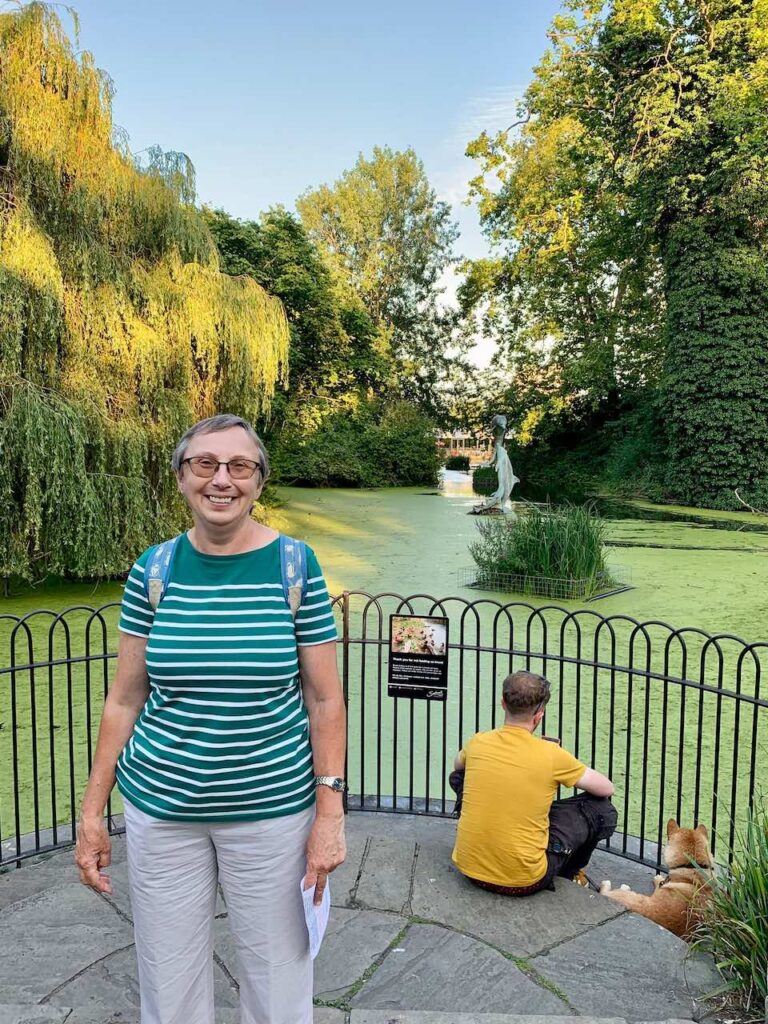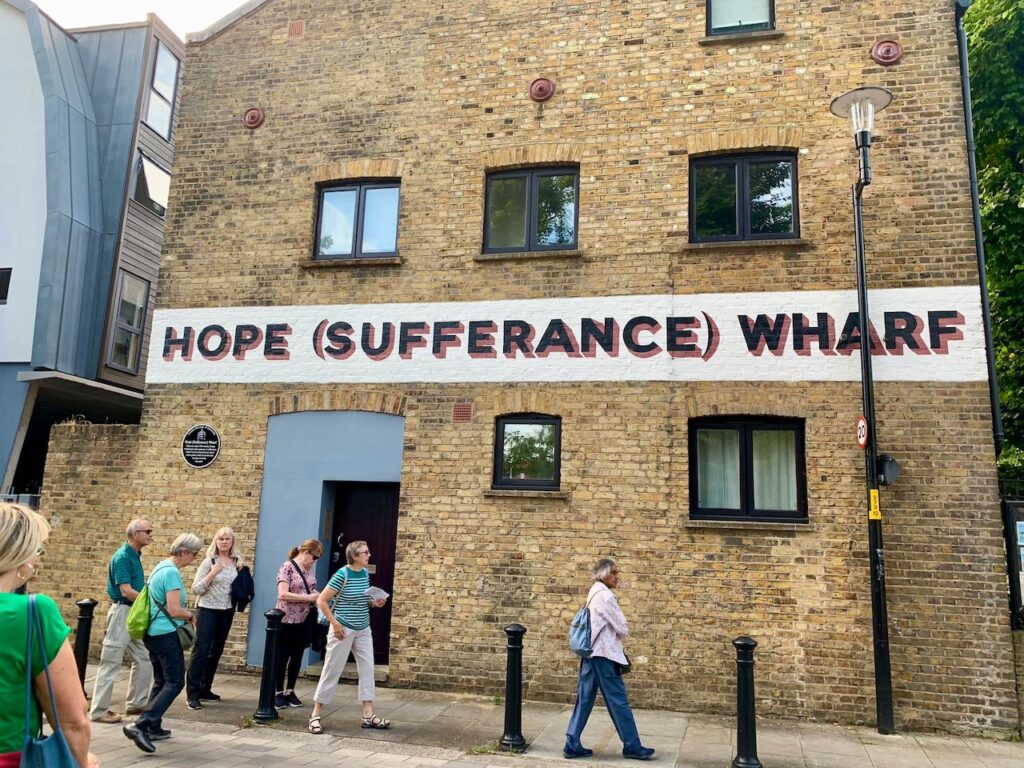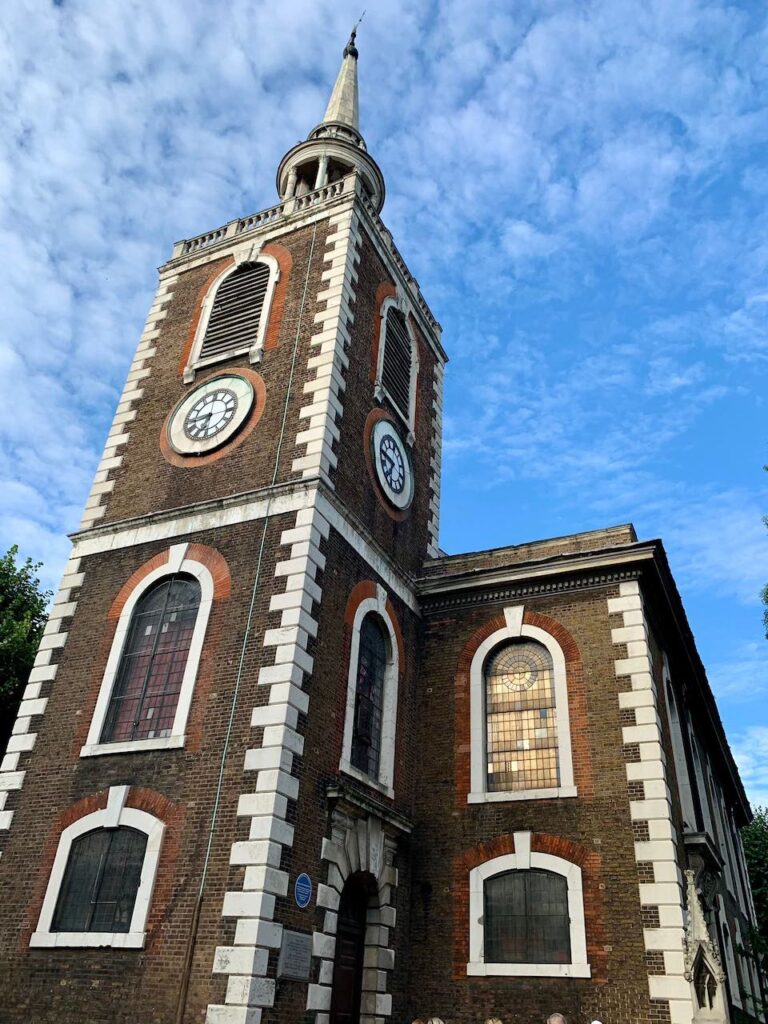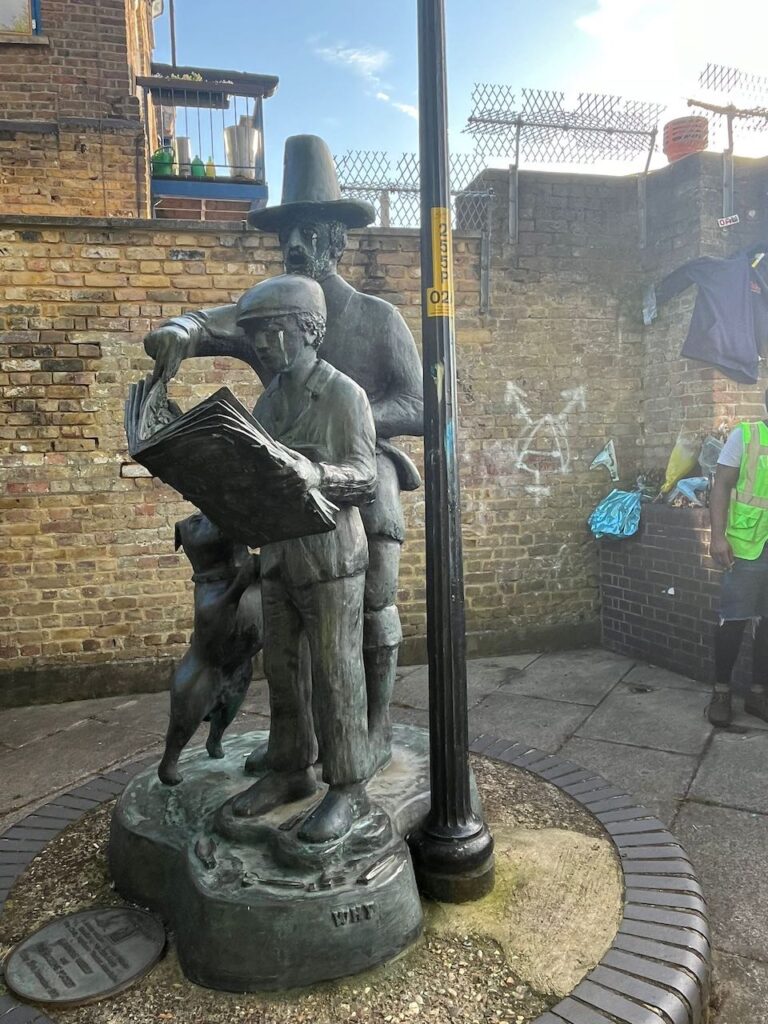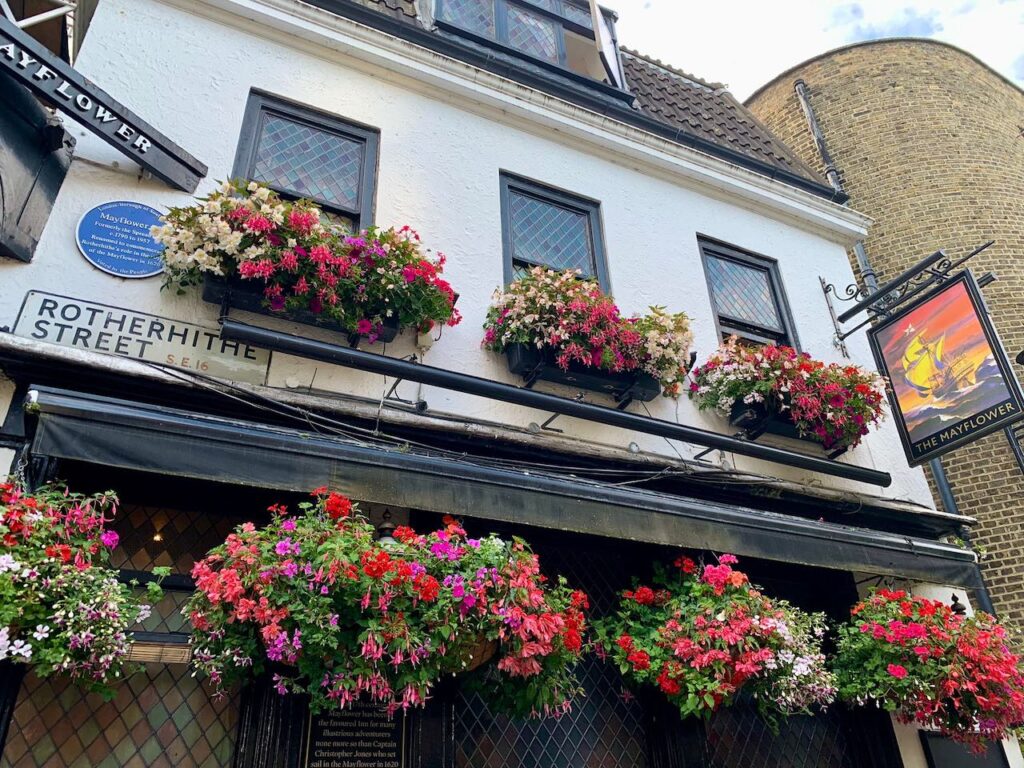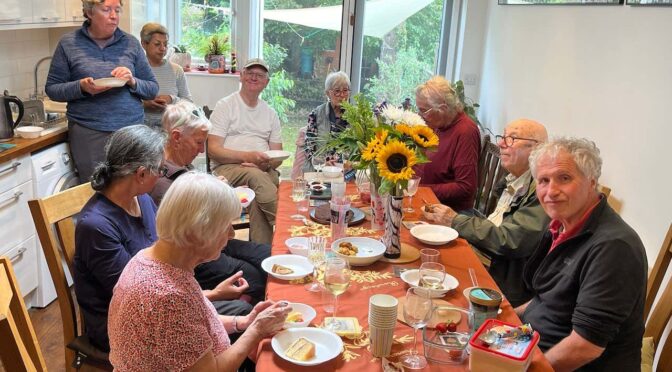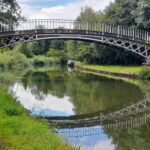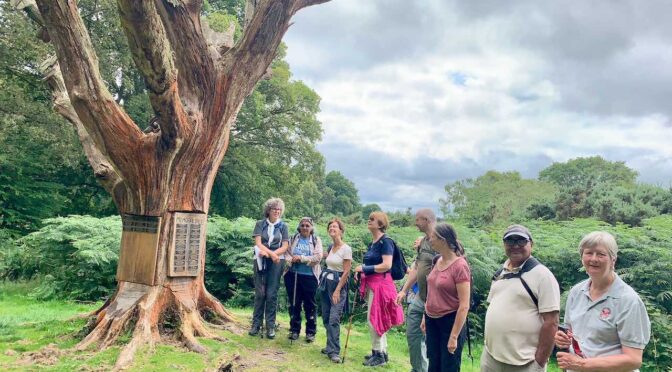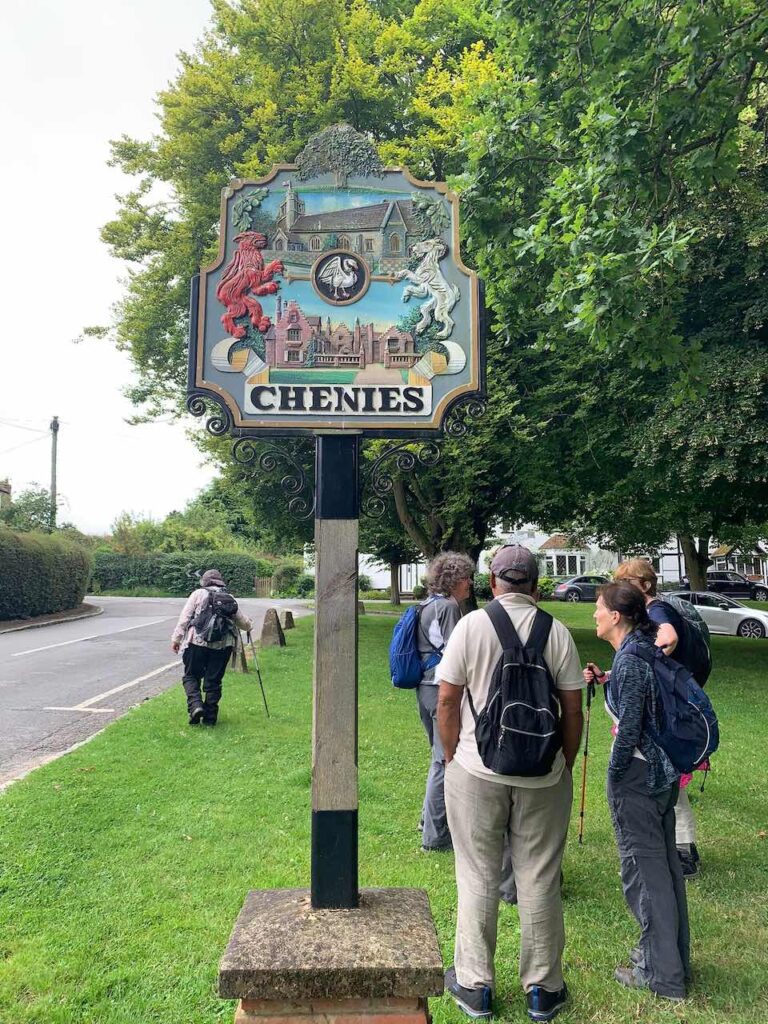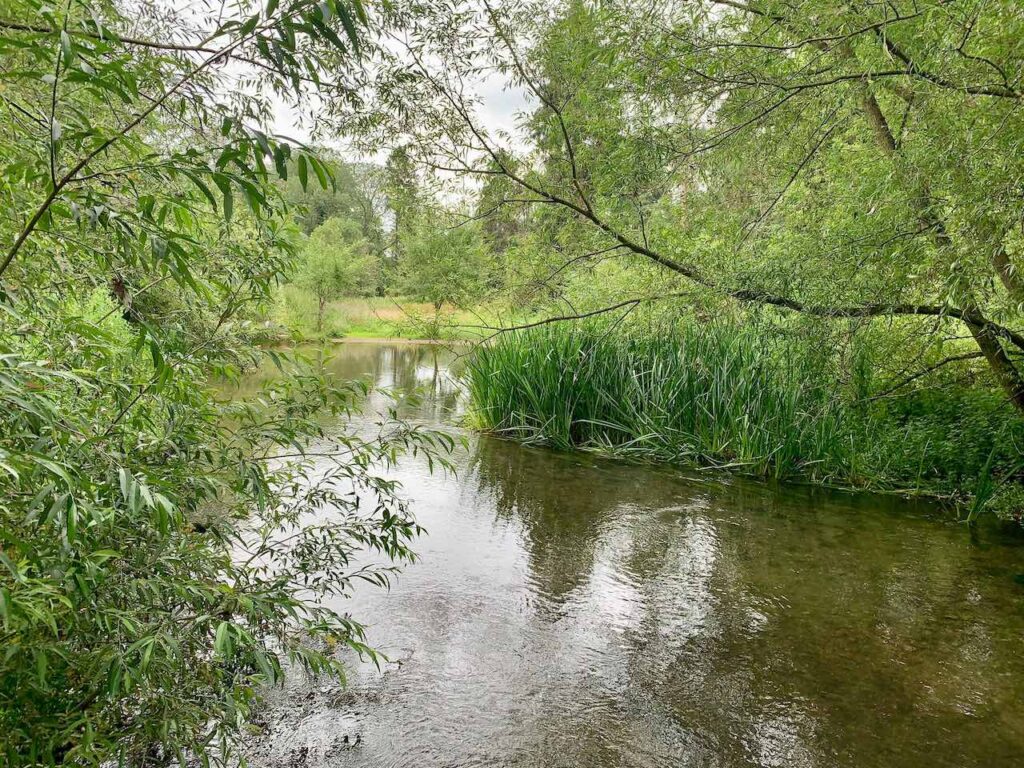On Saturday 20th we set out on our annual 14.5 mile pilgrimage to the Little Cottage Tea Room at Glynde. We gathered at Lewes station, had a very short briefing and set off through the lovely Southover Grange Gardens, past Anne Boleyn’s house which would probably be well worth a visit but there is never time and up Jugg’s Road which took us out of town and into the beautiful midsummer countryside.
Chalk downland is threatened and apparently 50% of what remains in the world is in the UK so we are very fortunate to be able to walk in this tiny precious patch. The climb up to the top is long and steep and luckily the sun refrained from coming out until we’d made the summit. We were rewarded by the song of many sky larks and views of the sea in the distance.
We dipped down to Rodmell for a swift pint at the pub and then on to have lunch in the grass outside Southease church which is lovely and is mentioned in the Doomsday Book. Again, it must be well worth looking at inside but the tea shop called and we had another, enormous hill to climb, so we gathered our resolve and set off.
We all made it to the top; some in one go, some in swift bursts & some slow & steady. Again there were larks and beautiful views in every direction and we continued along the top in the sun. After a steep descent and crossing a horrible dual carriageway, we arrived at the Place of Great Joy – the tea shop.
Words cannot describe the delights of that place so I won’t try. Fuelled by scones and cakes, we managed the third serious hill and went up again in the late afternoon light with the hills beginning to cast their long shadows over the valley. A fourth but not very serious hill led us to Lewes golf club and then down into the town where we had a swift pint before we caught the train back to London.
Harriet
Photos by Vanessa, Harriet, Mary and Chris


